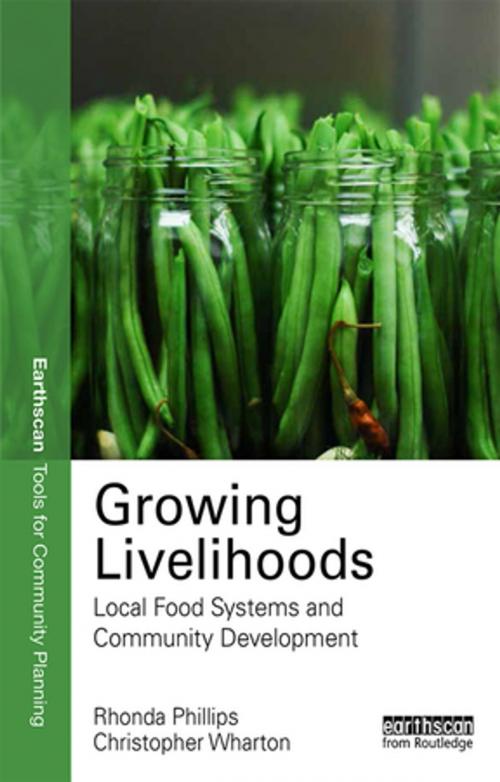Growing Livelihoods
Local Food Systems and Community Development
Nonfiction, Art & Architecture, Architecture, Planning| Author: | Rhonda Phillips, Chris Wharton | ISBN: | 9781317421603 |
| Publisher: | Taylor and Francis | Publication: | November 19, 2015 |
| Imprint: | Routledge | Language: | English |
| Author: | Rhonda Phillips, Chris Wharton |
| ISBN: | 9781317421603 |
| Publisher: | Taylor and Francis |
| Publication: | November 19, 2015 |
| Imprint: | Routledge |
| Language: | English |
Community planning is starting to include a broader food systems focus, spanning topics such as nutrition and health outcomes, sustainable farming practices, economic and social implications of local food production, distribution, and consumption. Together, these issues are a driving force for the passions of those seeking positive change in their communities through healthy food. The purpose of this book is to explore how and where local food and farms, as part of a local or regional food system, can positively impact both economic development and overall well-being of communities. Across North America, there are good examples of the ways in which innovative local food systems provide opportunities for: increasing job growth and entrepreneurship; retaining local farmers on their land while nourishing their community; and providing communities places to congregate, bond, and become closer-knit. Six such examples are highlighted, each illustrating a novel model offering unique contributions to community economic health and well-being. These important cases offer practitioners, advocates, academics, and students insight into how applications can be built or studied in their own communities.
Community planning is starting to include a broader food systems focus, spanning topics such as nutrition and health outcomes, sustainable farming practices, economic and social implications of local food production, distribution, and consumption. Together, these issues are a driving force for the passions of those seeking positive change in their communities through healthy food. The purpose of this book is to explore how and where local food and farms, as part of a local or regional food system, can positively impact both economic development and overall well-being of communities. Across North America, there are good examples of the ways in which innovative local food systems provide opportunities for: increasing job growth and entrepreneurship; retaining local farmers on their land while nourishing their community; and providing communities places to congregate, bond, and become closer-knit. Six such examples are highlighted, each illustrating a novel model offering unique contributions to community economic health and well-being. These important cases offer practitioners, advocates, academics, and students insight into how applications can be built or studied in their own communities.















